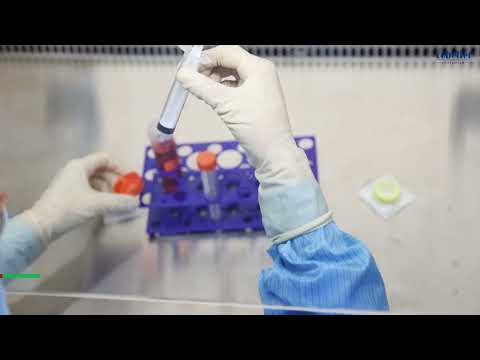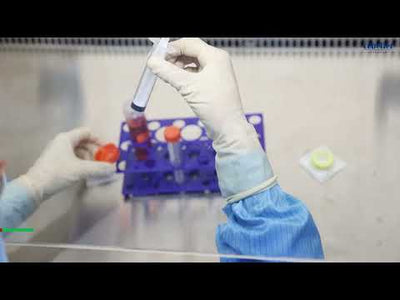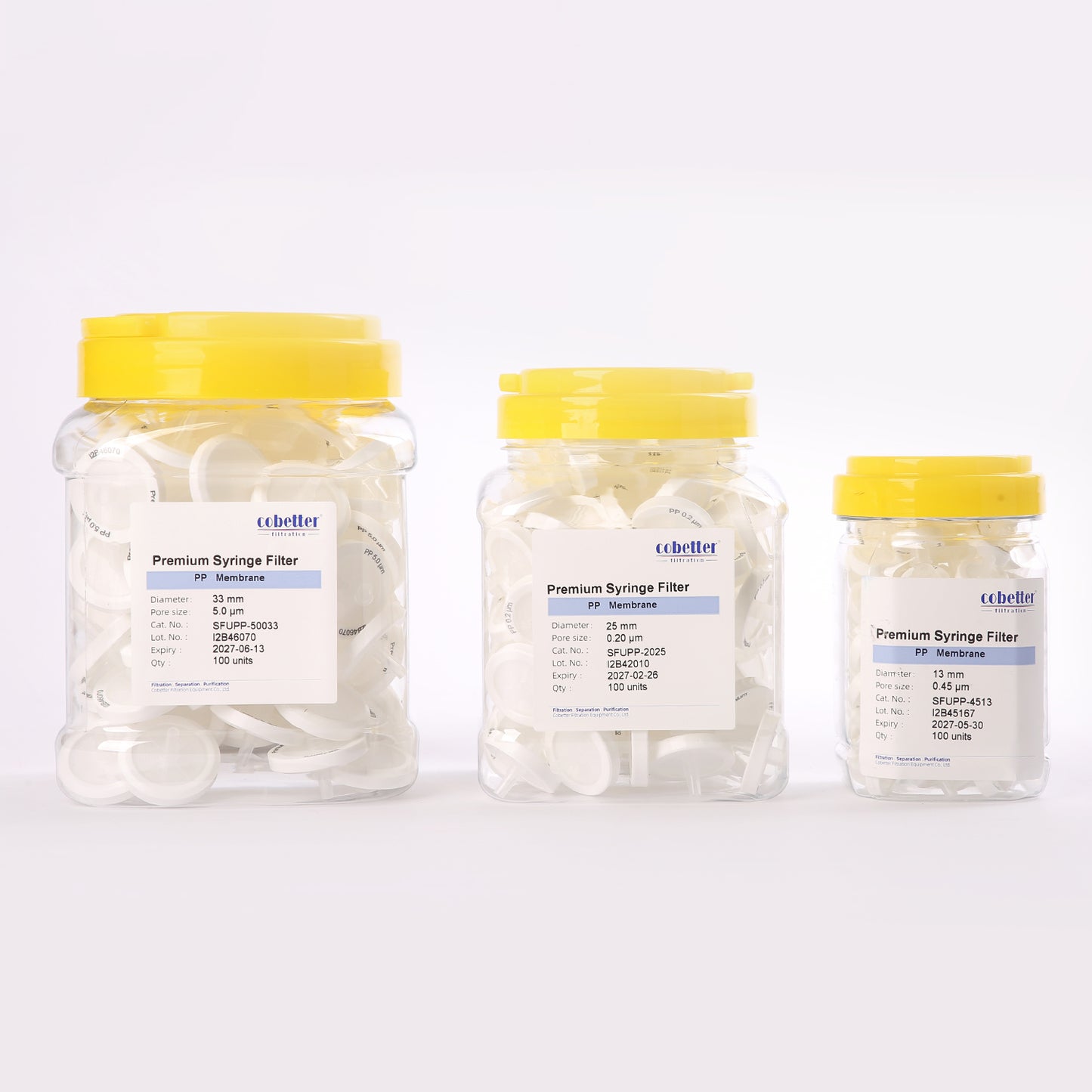Hydrophobic PP Syringe Filters Non-sterile 100pcs/pk
Couldn't load pickup availability
Naturally hydrophobic and are good choice for filtration of aqueous or organic solutions with high levels of debris and aggressive solutions. It has a wide range of chemical compatibility with organic solvents. It's versatile and cost-effective with a long list of chemical resistances like acids, bases, alcohols, and esters.
Specifications
| Connections | Inlet | Female Luer Lock | |||
| Outlet | Male Luer Slip | ||||
| Materials | Housing |
Polypropylene | |||
| Membrane | Polypropylene | ||||
| Wettability | Hydrophobic | ||||
| Physical Properties | Pore Size | 0.2 μm, 0.45 μm, 1.0 μm, 3.0 μm 5.0 μm, 10.0μm | |||
| Filter Diameter |
|
||||
| Filtration Area |
|
||||
| Maximum Operating Pressure |
|
||||
| pH Range | 1.0 – 14.0 | ||||
| Sterility | Delivery Condition | Nonsterile | |||
| Sterilization Method | Not Recommended | ||||
| Package | Pack Size | 100pcs | |||
| Packaging | Bulk packed |
Performance
| Filter Diameter | Pore Size | Flow Rate (mL/min@0.21Mpa, 20°C, 210kPa, 30psi) |
| 13mm | 0.22μm | 157 |
| 0.45μm | 774 | |
| 25mm | 0.22μm | 762 |
| 0.45μm | — | |
| 1.0μm | — | |
| 5.0μm | 2322 |
Features
- Fast flow rate
- Wide chemical compatibility
- High retention efficiency
- High porosity
- Low non-specific binding
- Large dirt-holding capacity
- HPLC-certified
Applications
- For pre-filtration, clarification, fine particle removal of aqueous and organic solutions
- General sample preparation
- HPLC/GC sample filtration
Select by Volume
| Sample Volume | Filter Diameter | Filtration Area | Hold-up Volume |
| < 10mL | 13mm | 0.72 cm² | < 25μl |
| 10mL to 100mL | 25mm | 3.4 cm² | < 100μl |
| 100mL to 200mL | 33mm | 4.5 cm² | < 125μl |
How to use a syringe filter?
Choose the right type of membrane material based on the properties of your sample. Be careful of the chemical compatibility to avoid extractables and leachables. Read this article about How to choose a syringe filter.
1. Load the sample into the syringe.
2. Attach the filter to the luer-lock of the syringe with a twisting motion. Make sure it is securely attached.
3. Filter the sample. Hold the syringe and filter vertically, and gently press the plunger to push the sample through the filter. Take care not to apply too much force or you may damage the filter.
4. Discard the used filter and repeat for the next sample.
- Chemical_Compatibility_Chart_for_Syringe_Filters Download




























